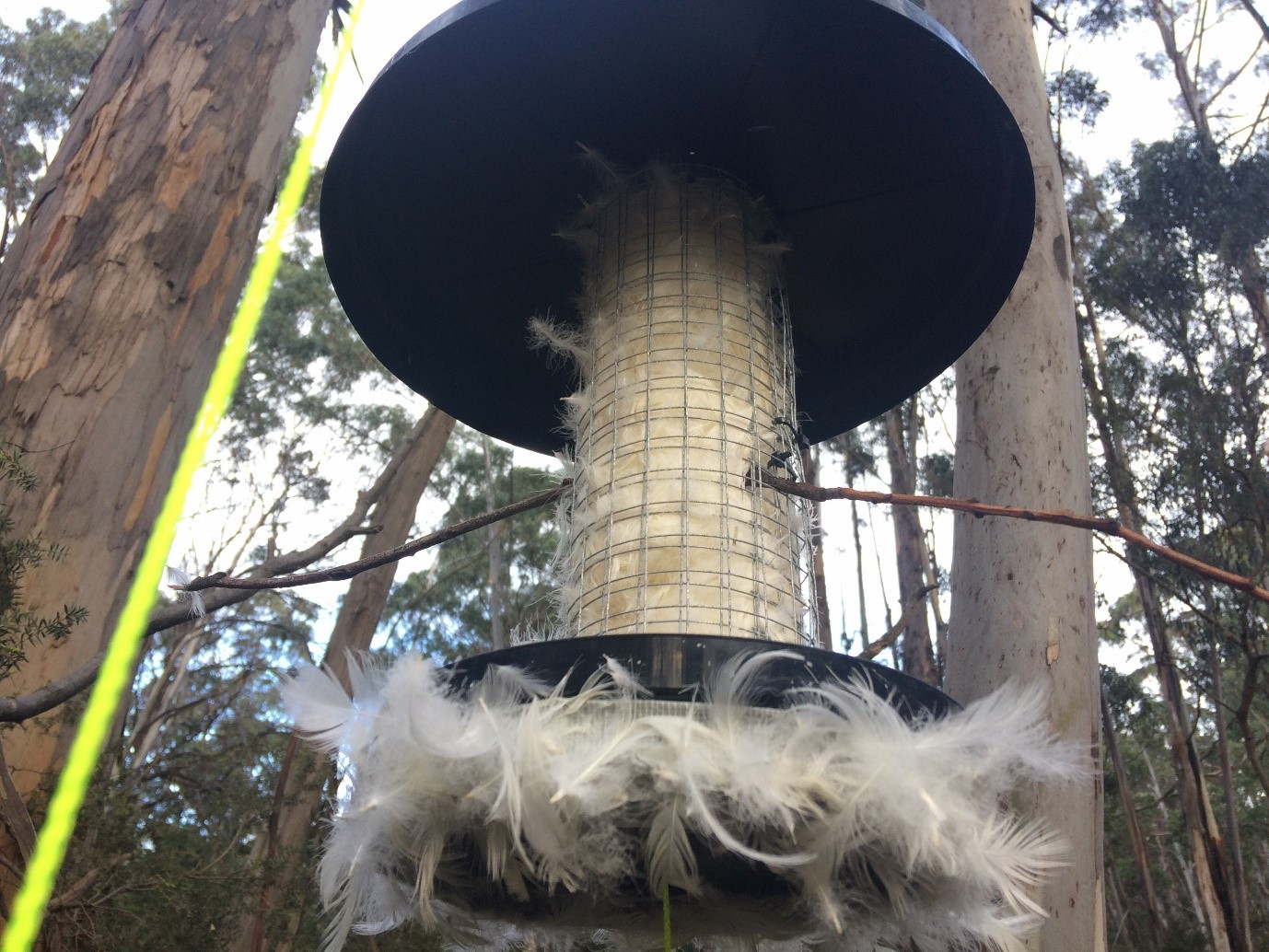MEDIA RELEASE
Tasmania’s tiny Forty-spotted Pardalote is a bird species that faces significant challenges – but recent research has shown that using a simple feather dispenser may offer a temporary solution.
Habitat loss and degradation, a dwindling source of the white gums they rely on for food, a rapidly declining population, and the high death rate of nestlings from an endemic parasitic fly are all putting them at high risk of extinction. Helping Forty-spotted Pardalotes to recover demands a range of approaches – and one important question is how to boost survival rates of nestlings.
Early research by the Australian National University (ANU) demonstrated that dispensers containing bird-safe insecticide-treated feathers helps combat fly larvae in Forty-spotted Pardalote nests and dramatically improves the survival rate of nestlings. Encouraged by this success, NRM South supported the ANU to expand on this research through funding from the Australian Government’s National Landcare Program.
The aim of this new study was to see if feather dispensers used at a landscape scale could help boost reproductive success. As a final part of these project activities, NRM South and ANU are working to develop an online public guide on how to build a feather dispenser.
Dr Fernanda Alves, ANU researcher who led this study, is optimistic that additional dispensers in key locations will have a positive impact on local populations of Forty-spotted Pardalotes. However, she emphasized that they are only suitable in specific locations and require a commitment to ongoing maintenance.
‘While these dispensers are intended to be simple and cheap to make, they’re only going to be beneficial in north Bruny Island and around Tinderbox. This is where we have evidence that parasitism is an issue, for other sites further research is needed,’ explained Fernanda. ‘It’s also crucial that anyone interested in building a dispenser will commit to checking and maintaining them. It’s not a lot of work but they need to be checked and re-treated with insecticide every six weeks throughout the six months of their breeding season.’
Cindy Hull, NRM South’s Biodiversity Program Manager, oversees support for a suite of different approaches to help boost this little bird’s chances of survival. ‘The results we have seen from this research are incredibly positive’, said Cindy. ‘There are also aspects of the project that focus on genetics and nest box use. Over the years, NRM South has supported several projects working to protect both white gums and Forty-spotted Pardalotes, and community involvement is always an important part of these efforts.’
The guide will be available on the NRM South website prior to this year’s Forty-spotted Pardalote breeding season in late winter.
-ENDS-
